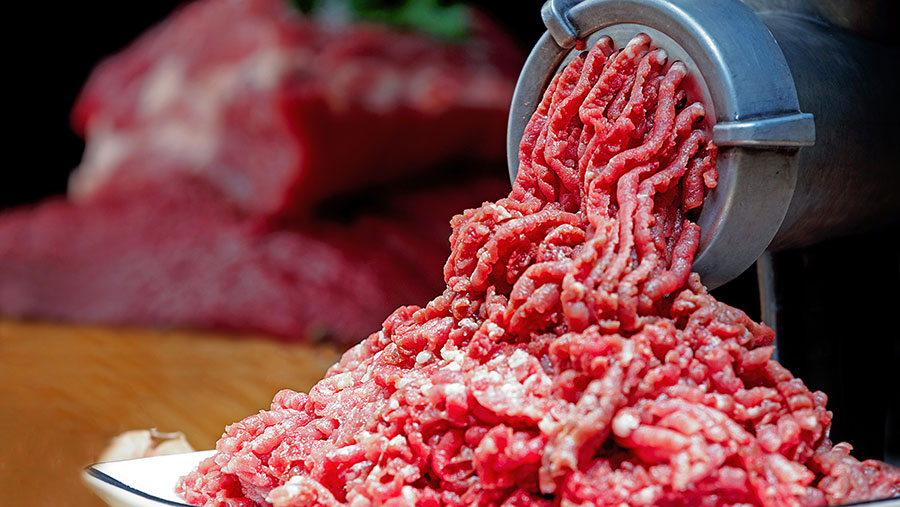Coronavirus: Why rise in mince sales can undercut beef price
 © Maksim/Adobe Stock Photo
© Maksim/Adobe Stock Photo Panic buying amid tension over the coronavirus pandemic caused demand for beef to soar during March, according to the AHDB.
However, the rise was overwhelmingly in sales of minced beef (see “March 2020 beef sales breakdown”), raising concerns about so-called carcass balancing and downward pressure on prices.
Last week, farmers reacted with concern when it emerged that some supermarkets had stocked shelves with a shipment of Polish beef when demand was at its peak as UK prices remained flat or fell.
See also: Coronavirus: Guidance for farmers and contractors
AHDB senior analyst Duncan Wyatt explained that each carcass has a variety of cuts.
“Some parts of the carcass will regularly find their way into the mincer, such as neck and heel muscles, while others, of course, will rarely be minced, such as fillets and the striploin,” Mr Wyatt said.
March 2020 beef sales breakdown
- An extra £1.4bn was spent on food and drink
- Spend on meat, fish and poultry was up by 24%
- Mince volumes were up 45%
- Steaks up 20%
- Burgers up 38%
Source Kantar/AHDB
Cuts such as flat brisket, or the chuck roll and even silverside, can go either way according to demand, but about 45% of the carcass is typically processed as mince.
But when demand for mince rises, these higher-value cuts are put through the mincer to meet demand and this can undermine the beef price.
“Flat brisket goes from a braising steak price of nearly £10/kg to a lean mince price closer to £6/kg,” said Mr Wyatt.
“As it makes up about 3.5% of the carcass, mincing this cut in particular is enough to reduce the overall retail value of the beef carcass by 14p/kg,” he suggested.
Mincing the silverside too – just over 6% of the carcass – reduces the overall retail value by a further 9p/kg.
As a result, the overall retail value of meat from the carcass has fallen by about 23p/kg (or £79 a head) for an average 345kg carcass.
